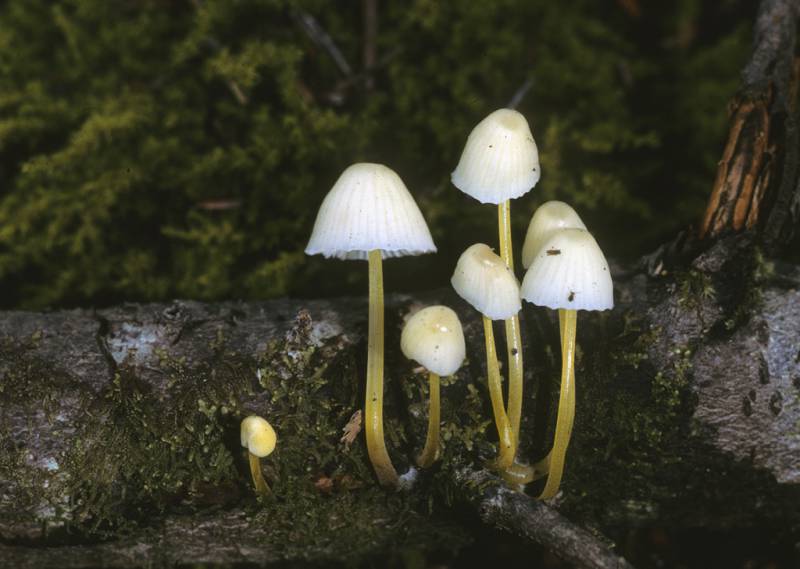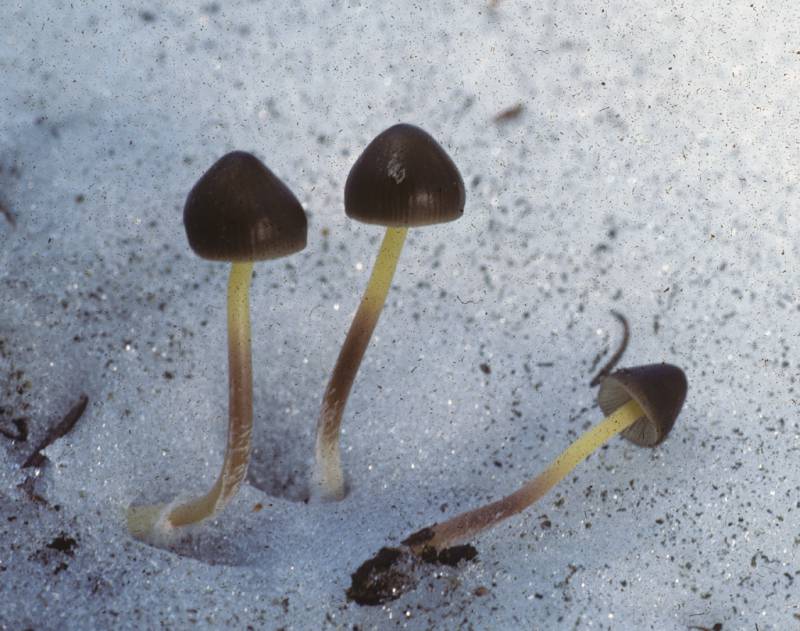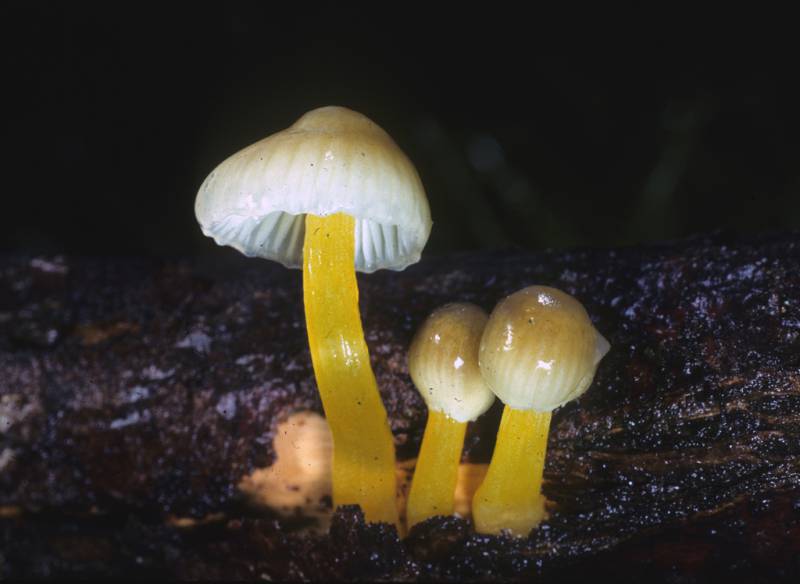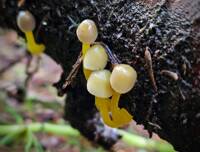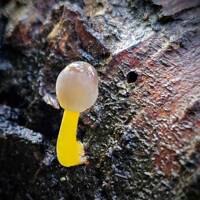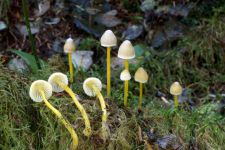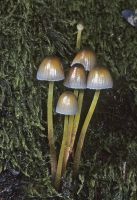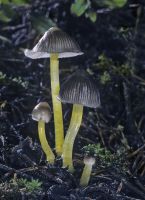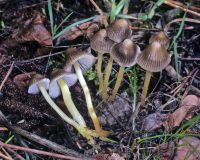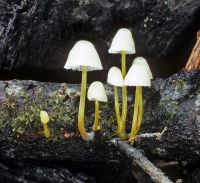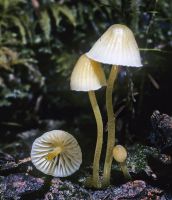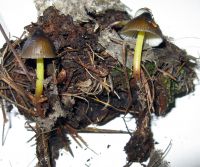Distribution: Occurs widely in northern North America, Europe, and Asia, and numerous varieties
Substrate: In the PNW, M. epipterygia occurs in small to somewhat larger groups in needle litter, or on twigs or wood.
Spores: 8--11 x 5--6 µm and the cheilocystidia are club-shaped with short projections
Conservation Status: Not of concern
Mycena epipterygia is another variable species that can be recognized easily in some forms and not so easily in others. The not-soon-forgotten sight of a line of brilliant yellow glistening fairy bonnets marching along an arching, moss-draped, maple branch evokes the essence of our wet old-growth forests. The cap varies from mustard yellow, often with a faint greenish tone and whitish edge, to shades of pale gray and brown with or without yellowish tinges, to rather dark brown in one variety. The cap is viscid in wet weather and its gelatinous skin completely peelable. The gills are white to buff and somewhat widely spaced, and the stipe is smooth, white to lemon yellow, viscid when wet, and shiny when dry. The spores measure 8--11 x 5--6 µm and the cheilocystidia are club-shaped with short projections, like those of M. clavicularis.
- var. cascadensis
- var. epipterygia – yellowleg bonnet, yellow-stemmed Mycena
-
var. epipterygioides

-
var. griseoviridis – yellow-stemmed Mycena

-
var. lignicola – yellow-stemmed Mycena

PNW Herbaria: Specimen records of Mycena epipterygia in the Consortium of Pacific Northwest Herbaria database
CalPhotos: Mycena epipterygia photos

